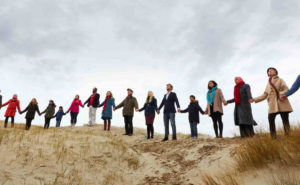What happens when an organisation commits to logging all the time and effort that volunteer supporters pour into a campaign and adding up its equivalent in staff time? Équiterre, a Canadian environmental NGO, did just that—and discovered a novel way to calculate the value of people power.
Geneviève Puskas and her colleague Marie-Eve Leclerc at Équiterre commissioned a new measurement system for their 2018 “Vire au vert” political mobilisation campaign. At the heart of this approach was a commitment to log the time and efforts invested in the campaign both in terms of staff hours throughout the campaign as well as detailed counts of every action performed by volunteers. This accounting covered everything from social media engagements to numbers of higher-barrier supporter actions such as writing letters to political candidates as well as attending or organising public events.
One of our ‘a-ha moments’ was to score engagement levels based on the time it took to accomplish different actions. –Geneviève Puskas, Équiterre
When all supporter actions were logged in these different categories, they were assigned scores according to the estimated amount of minutes it took to achieve each action. In this way, the system generated a total point/minute count for each type of activity performed, as well as a total count of minutes “donated” by supporters to move the campaign forward.
Using these scored action/minute counts, Équiterre was then able to divide all supporter contributed minutes into hours and generate a ratio of volunteer time to staff time spent on campaign management that could be used as a benchmark against which to measure the efficiency of future campaigns. Additionally, by taking the total number of donated volunteer hours, multiplied by a median staff hourly rate, Équiterre was able to arrive at an approximate dollar value equivalent for the donated supporter time and what it would have cost in paid staff hours.
Both of the outputs defined above clearly highlight the value of supporter efforts in people powered campaigns in terms that most decision makers will easily understand. What’s more, Geneviève Puskas reports that this measurement system helped the organisation understand what amounts of staff time will be required for people-powered campaigns in the future, an essential reference for strategic planning.
How do you measure gifts of time, expertise and leadership? What indicators can you use to assess grassroots power building, organising and volunteer initiatives? This case study is part of a year long Measuring People Power project with over 500 participants from 170 global orgs that explored these questions. Find out more and get the key takeaways!



